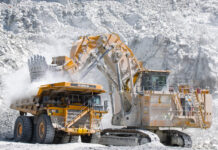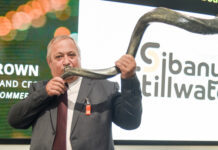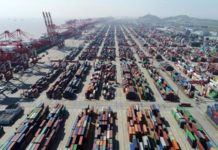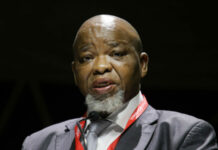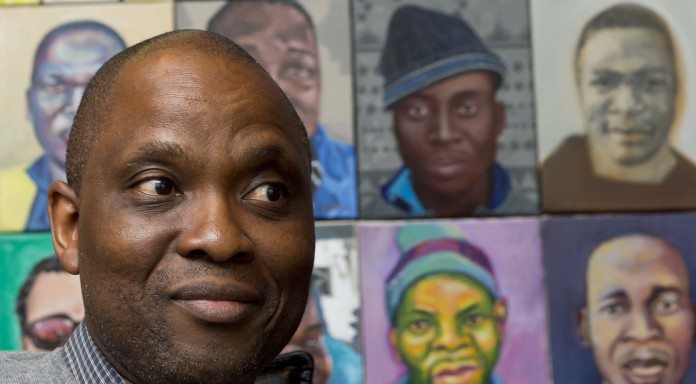
“UNFORTUNATELY, you are a week too early,” said Mxolisi Mgojo, CEO of Exxaro Resources. That’s his response to a question about whether the group intends making coal its core focus, or if a strategy of commodity diversification will continue to be supported.
“We are going to the board in the next two or three days to discuss the future of Exxaro,” he said. That was on June 3 which means the important decisions about the direction of Exxaro Resources, the R24bn coal, mineral sands and iron ore company are yet to be announced publicly.
As it turns out, nearly all the questions one could pose about Exxaro currently have a critical, visceral importance attached to them.
For instance, what does it intend to do about its black economic empowerment (BEE) structure which needs recasting once the existing BEE contract with its founding partners, including Mgojo’s predecessor, Sipho Nkosi, has expired?
Another is whether Exxaro intends to continue with its investment in Tronox, the New York-listed mineral sands producer; or if it will persevere with Mayoko, an iron ore prospect in the Republic of Congo (RoC)?
And on the subject of iron ore: does Mgojo think there is an opportunity for his company in Anglo American’s proposed unbundling or trade sale of its listed subsidiary Kumba Iron Ore? Exxaro has a 19.9% stake in Kumba through the operating subsidiary, Sishen Iron Ore Company (SIOC).
At least the question of whether Exxaro is interested in other mines Anglo wants to sell – its domestic coal mines – can be tackled. “Well, I did indicate in our roadshows [following the group’s results announcement in March] that if you look at Anglo’s coal assets, we made it very clear there’s only one asset that strategically talks to us.
“It’s Mafube because we’re a 50:50 joint venture partner so it would just make sense for us if we could also own the other 50%,” said Mgojo. “We are overly exposed already on tied mines; we are already exposed on domestic [coal].”
The so-called ‘tied mines’ are the cost plus operations built in partnership between mining companies and Eskom at a time when capital was more abundant and access to coal an easier challenge technically to overcome. Their sole purpose was to sell coal on an exclusive basis to Eskom at a percentage above their operating cost.
However, Eskom’s growing disaffection for the tied mine business model has been made plain by its CEO, Brian Molefe. He doesn’t want to invest in them anymore believing them to be an inefficient means of supply. He wants short-term contracts based on a competitive tender process, and he doesn’t want the cost of building new mines either.
This had led to conflict between Eskom and its coal suppliers, including Exxaro Resources.
The issue blew up last year when the two parties failed to agree on terms for the renewal of a coal supply agreement from Exxaro’s Arnot coal mine to the nearby Arnot power station in South Africa’s Mpumalanga province.
Eskom turned to the open market hoping to extract a tender more to its economic taste. Unfortunately, that has proved difficult to achieve.
Mgojo thinks that without the backing of a solid coal supply agreement (CSA) with Eskom, financing new investment in coal mines will be a challenge. “The nature of the funding in the past was dependent on securing a CSA with Eskom and if there’s no certainty about what could be the cash flows … you cannot come and get funding for it,” he said.
Exxaro still has some exposure to domestic coal supply to Eskom, however.
It has significant supply contracts with Eskom’s Medupi power station through its nearby Grootegeluk mine in the Limpopo province. Matla mine also still supplies to Eskom. But increasingly, Exxaro has targeted the export market.
The expectation is that it can export close to eight million tonnes this year which is a significant leap over the four to five millon export tonnes the company has managed in the past.
Mgojo thinks the export coal market is more fluid than before, especially as freight rates allow exporters to be more flexible on destinations. So whilst new markets are opening up – he has recently pointed to new African markets – the key is driving a better coal business.
“A lot of work has been done on costs so I don’t think you want to get into a situation where you want to always focus on cutting more people as a way of reducing costs. The question is: ‘how do you do things smarter’.”
MARKET DISRUPTERS
So what of the future direction of Exxaro: does it stick with coal or twist on diversification? One concern for Mgojo, and his team, is the risk that coal as a primary input of baseload electricity generation could be partly replaced by renewable energy over a period of time.
Said Mgojo of the broad task of potential repositioning the company: “If you are not showing progressively that you want to migrate yourself to something that could be more relevant in the future, how long can you last? I always use the analogy that there were no shortage of horses when the steam engine disrupted the means of transport.
“So don’t assume that because there’s plenty of coal, there are not going to be disruptions to coal. When is that date? I don’t know. All I know is that there will be disruptions that will come and challenge your current business model,” he said.
If coal is a business potentially threatened by innovation, the question must inevitably fall on how Exxaro will de-risk its commodity mix? Is Anglo’s proposed divestment of its stake in Kumba Iron Ore not provide an interesting opportunity after all? As a shareholder in SIOC, Mgojo thinks it’ll be a matter of time before he engages on the subject.
“We are invested in SIOC so at some point we’re going to have to make a decision whether we want to stay invested in SIOC at the current level or whether we want to increase our investment. Right now, everyone is running their own process,” he said.
I would not fault Government for wanting to create a unique South African big play
Apart from conducting its own due diligence into Kumba, there is the issue of whether Anglo requires Exxaro as a potential provider of empowerment credits. “We will be guided by Anglo’s process. Anglo will also have to tell me whether they still need empowerment in terms of what they’re doing,” said Mgojo.
“Maybe they will allow me to stay there, but doing something else,” he said. “I don’t know. These are some of the things that are really not in my control; they are not in my hands and it still remains like that,” he added.
One piece of chit-chat doing the rounds in Johannesburg is that the Government may want Anglo to consider vending its stake in Kumba into a different entity; one that could consolidate other iron ore and ferrous metal products.
In an interview for the Mining Yearbook, Anglo American CEO, Mark Cutifani alluded to it. “We haven’t made a final decision [on whether to unbundle Kumba or divest of it through a trade sale], but we can be flexible depending on how the government, major shareholders may want us to think about things.
“So if a case is put to us, that maybe you could put two or three assets together and help create a different type of entity in South Africa, we’d be very open to conversation,” said Cutifani, adding that neither formal, nor informal discussions had yet taken place with the government about it.
It is known that the government pensions management firm, the Public Investment Corporation, is spending time thinking about ways to consolidate mineral properties in South Africa amid divestment of assets by internationally held mining companies.
“I would not fault Government for wanting to create a unique South African big play,” said Mgojo. “Strategically, it’s the right thing that government wants to make sure that some of these assets can actually reside in South Africa”.




